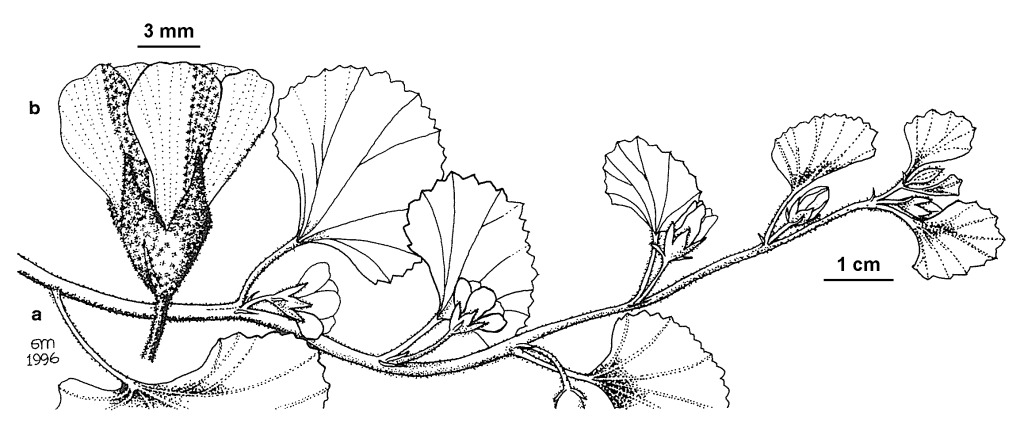Malvella leprosa
(Ortega) Krapov. Alkali SidaDecumbent perennial herb; indumentum of stellate hairs rubbing off to reveal peltate scales. Leaves broadly ovate, reniform or flabellate, 10–35 mm long, 15–45 mm wide, asymmetric at base; margins irregularly dentate; upper surface olive-green; lower surface paler and more densely hairy; stipules lanceolate, 4.5–6 mm long. Pedicel 5–19 mm long in flower; epicalyx 3–4 mm long, attached at base of calyx. Calyx c. twice as long as epicalyx, the lobes inconspicuously ribbed along midline; petals c. 13 mm long, asymmetrically rounded or erose apically; stamens inserted at different levels on column; styles 6–10. Fruit conical or ovoid, c. 6 mm diam., hairs stellate to subpeltate; mericarps 3.5 mm high. Flowers mainly summer.
MuM, VRiv, MuF, Gold. Also naturalised SA, NSW, South America. Native to south-west USA. Recorded several times in Victoria from irrigated crop land and channel banks (usually on alkaline soils, hence the common name) in the north-west (Mildura, Swan Hill, Kerang areas).
A declared noxious weed in Victoria. Parsons & Cuthbertson (1992) report that the seeds of this species germinate in spring followed by summer flowering and death of the aerial parts in autumn. New shoots arise from the root system in spring.
In its native America, plants previously attributed to Sida hederacea, with a sessile stellate indumentum, and Sida leprosa, with densely ciliate silver scales, intergrade and are now treated as a single species. Victorian populations equate to the first form.
Barker, R.M. (1996). Malvella. In: Walsh, N.G.; Entwisle, T.J., Flora of Victoria Vol. 3, Dicotyledons Winteraceae to Myrtaceae, pp. 345–346. Inkata Press, Melbourne.
 Spinning
Spinning
